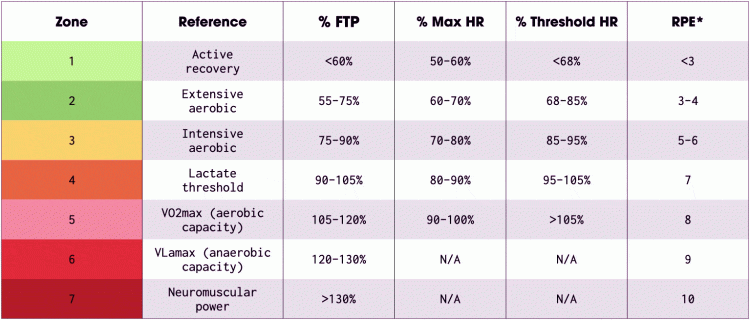Exercisers often categorize themselves as lifting or cardio fans. In fact, go to any gym, and you’ll usually see a clear separation between these two types of workout, with the weight training equipment in one place and the cardio machines in another.
However, while strength training clearly has its benefits, including increased strength, muscle mass, and bone density, there is a strong argument for saying that cardio is actually the most important form of exercise.
That’s because cardio develops your health, lungs, and circulatory system, all of which are responsible for keeping you alive.
In addition, regular cardio, i.e., the 300 minutes per week recommended by the Centers for Disease Control (1), has been shown to lower the risk of suffering from (2):
- Cardiovascular disease
- Certain types of cancer (e.g., colon cancer, breast cancer)
- Chronic obstructive pulmonary disease (COPD)
- Diabetes (Type 2)
- High blood pressure (Hypertension)
- Metabolic syndrome
- Obesity
- Stroke
Cardio also offers numerous benefits, including weight control, increased fitness, improved endurance, and improved mood.
So, long story short, whatever you are training for, cardio deserves a place in your workouts.
Level Up Your Fitness: Join our 💪 strong community in Fitness Volt Newsletter. Get daily inspiration, expert-backed workouts, nutrition tips, the latest in strength sports, and the support you need to reach your goals. Subscribe for free!
Unfortunately, cardio is not entirely foolproof, and there are several common mistakes that could undermine your workouts.
I’ve been a personal trainer for more than three decades and have seen and fixed every cardio mistake you can think of. In this article, I share the seven cardio mistakes that almost everyone makes and how to avoid them.
The 7 Most Common Cardio Mistakes
Enjoy all the benefits of cardio with none of the drawbacks by avoiding these common cardio workout mistakes!
1. Relying Too Much on Cardio for Weight Loss
While cardio has numerous health-related benefits, many exercisers cycle, run, swim, and row to lose weight or prevent weight gain. This makes sense as cardio, like all forms of exercise, increases your kilocalorie expenditure. As an added benefit, much of the energy used during cardio comes from stored body fat.
The amount of energy used during cardio depends on several factors, including workout intensity, duration, and your weight. However, cardio is so inextricably linked to weight management that some people rely on it too heavily.
Related: List of Kilocalorie Burning Calculators
While cardio can definitely help you control your weight, it’s a mistake to try to use it exclusively. That’s because:
- Cardio doesn’t burn as many kilocalories as many people think.
- You only burn more kilocalories on the days you exercise.
- It’s often easier to eat less rather than exercise more.
- You can’t out-exercise a bad diet.
Research on PubMed suggests that eating less to create an energy deficit is the most important weight loss factor (3). While exercise is beneficial, its contribution is pretty small compared to diet.
Solution: Think of cardio as a supplement to and not a replacement for a healthy, weight-loss diet. While cardio will enhance your weight loss efforts, it’ll be much more effective if your diet supports your goals.
2. Not Monitoring Cardio Intensity
Imagine going to the gym and lifting whatever weights you feel like using or doing a random number of sets or reps. Needless to say, such an unstructured approach probably won’t give you the results you want.
And yet, as crazy as such a scenario sounds, that’s exactly what you do when you fail to monitor the intently of your cardio workouts. I see many exercisers simply “doing cardio,” with no thought as to whether they are working hard enough or, more commonly, too hard.
Cardio intensity is measured by your heart rate and its relationship to your maximum or rating of perceived exertion, or RPE. RPE is a subjective scale for estimating how hard you are working.
Monitoring and adjusting cardio intensity based on your needs and goals makes your workouts as productive as possible, ensuring you don’t waste any of your precious time or energy.
Solution: Don’t just “do cardio.” Instead, pay attention to your heart rate. Most cardio machines and smartwatches have built-in heart rate monitors. Alternatively, with practice, you can estimate how hard you are working with RPE. Match your intensity level to your cardio needs and goals.
Related: Unlocking the Benefits of Zone 2 Training
3. Doing Too Much Cardio Before Lifting
A good strength training workout starts with a thorough warm-up. Warming up prepares your tissues, joints, and nervous system for what you are about to do, maximizing performance and minimizing your risk of injury.
Most warm-ups involve a little cardio. This part of the warm-up process is called the pulse raiser. It’s the part of the process that makes you warm.
Related: How to Warm Up for Strength Training
However, spending too long on your pulse-raiser cardio can hurt your weights workout. That’s because it uses the energy you should be spending on lifting. While it may be tempting to adopt a “more is better” attitude to pre-lifting cardio, it’s generally best to limit yourself to 5-10 minutes.
That should be enough to get your blood pumping and increase your core temperature, but not so much that it detracts from the main part of your workout.
Of course, for every “rule,” there is an exception…
Level Up Your Fitness: Join our 💪 strong community in Fitness Volt Newsletter. Get daily inspiration, expert-backed workouts, nutrition tips, the latest in strength sports, and the support you need to reach your goals. Subscribe for free!
For example, suppose you are an endurance athlete who only uses resistance training to supplement your running, cycling, swimming, rowing, etc. In that case, it’s okay to do that activity first. After all, cardio is your priority. However, if building strength or muscle mass is your main goal, you should lift first and do cardio afterward.
Solution: Limit warm-up cardio to 5-10 minutes and save your energy for the lifting part of your workout. Do your cardio training after you’ve hit the weights or on the days in between strength training workouts. Resist the temptation to turn your warm-up into a cardio workout.
4. Improper Use of Cardio Machines
Your workouts will be much more effective if you use the machines properly. Common cardio machine faults I see almost daily include:
- Leaning over the console
- Leaning back on inclined treadmills
- Over-reliance on handrails
- Not adjusting the resistance
- Slouching
- Going too fast/too slow
Any of these “cardio sins” will make your workout less effective. I especially hate seeing people on inclined treadmills hanging off the handrails and leaning back so they’re perpendicular to the machine. This cancels out the incline, making the whole workout pretty much pointless.
Just as there is a right way to squat, deadlift, and bench press, there is a right way to use bikes, treadmills, and rowers. Correct exercise form will make your workouts more effective while minimizing the risk of injury.
Solution: Stop looking for ways to make your cardio workout easier! Sit or stand up straight, try not to hold the handrails, and adjust the speed, resistance, or incline according to your needs and goals. If you have to cheat, the machine is not set at the correct level for you.
5. Not Following a Progressive Cardio Plan
There is a saying in fitness, “If you always do what you have always done, you’ll always get what you always got.”
While that might sound like a funny little tongue-twister, it describes how your workouts must be progressive if you want to make long-term improvements in your fitness. If you want to change your body, you need to change your program, too.
Consequently, you can’t do the same 20-minute treadmill run at seven miles an hour and expect to get fitter. Your body adapts to the workout you do, so to improve performance, you’ll need to gradually increase the challenge of your workouts.
You don’t have to make big changes to your cardio workouts to keep your fitness gains rolling. However, small, regular increases add up over time and will help keep you out of any progress ruts.
Solution: Gradually make your cardio workouts harder. The main cardio variables are:
- Frequency – how many workouts per week.
- Intensity – speed, resistance, incline, heart rate, RPE, etc.
- Time – duration of workout
- Type – exercise modality, e.g., walking vs. jogging vs. running.
Raise the difficulty of your workouts every couple of weeks to ensure you keep getting fitter. However, avoid increasing things too quickly, which could lead to tiredness or injury.
6. Focusing on Cardio Quantity and Not on Quality
Endurance athletes often talk about junk miles. This is the concept of doing more training than is necessary to achieve a specific goal. Invariably, rather than contribute to improved fitness, junk miles detract from your progress by hurting your recovery.
For example, when training to run a faster 5k, there is not much point in running 30 or more miles per week. While some of those miles will be helpful, many will not, as they’re above and beyond what you need to do for a faster 5k.
Many recreational exercisers make a similar mistake with cardio. Instead of doing what’s necessary to achieve their goal (lose weight, improve health, build fitness), they do far more than they need, often clocking up many hours each week.
This is often known as chronic cardio and can cause a host of research-backed health and fitness problems, including:
- Overuse injuries
- Impaired immunity (4)
- Hormone imbalances (5)
- Heart and arterial damage (6)
- Impaired strength gains and muscle growth (7)
That’s not to say doing a little more cardio than you need is a problem. However, if you do way more than you need, you may cause more harm than good. Read more about the dangers of doing too much cardio in this article.
Solution: Unless you are an endurance athlete, there aren’t many advantages to doing more than the CDC-recommended 300 minutes of moderate activity a week. Adjust your cardio volume to match your goals and avoid falling into the “more is better trap.”
7. Skipping Cardio Altogether
Do you know what’s worse than doing too much cardio? Not doing any at all! Lifters often skip cardio because they believe that it’ll hurt their gains. Naturally lean people skip it because they think cardio is only good for weight loss. Folk with no cardiovascular health issues avoid cardio because they don’t believe it’s necessary.
Needless to say, all these people are wrong!
Regardless of your current health status, training goals, or body composition, cardio will do you good. Remember, cardio predominately affects your heart, lungs, and circulatory system, which are responsible for keeping you alive. Think of the cardio you do today as an investment in your (hopefully long and healthy) future.
Consequently, just about everyone will benefit from doing a reasonable amount of moderate-intensity cardio every week. Consider three 20 to 30-minute sessions an absolute minimum, and feel free to do more if you can. Add some daily brisk walking and you’ve got all your cardio requirements covered.
Solution: Make time in your workout schedule for regular cardio. Look for ways to make it fun and enjoyable, e.g., beach running, outdoor activities, casual sports, etc. Avoid things like treadmill running or indoor cycling if you find those sorts of workouts boring.
Closing Thoughts
Your time and energy are your most valuable commodities and I don’t want you to waste them doing unproductive or unnecessary cardio. To me, as a personal trainer with over 30 years of experience, wasting training time and energy is a crime against fitness!
So, audit your cardio workouts and check that you aren’t making any of the mistakes mentioned above.
Do you have a question about cardio? No problem! Just drop me a line in the comments section below, and I’ll get back to you ASAP.
Related: 8 Workout Mistakes Everyone Makes (And How to Avoid Them)
References:
- Centers for Disease Control and Prevention. (n.d.). Physical Activity Basics – Adults.
- Agarwal SK. Cardiovascular benefits of exercise. Int J Gen Med. 2012;5:541-5. doi: 10.2147/IJGM.S30113. Epub 2012 Jun 22. PMID: 22807642; PMCID: PMC3396114.
- Kim JY. Optimal Diet Strategies for Weight Loss and Weight Loss Maintenance. J Obes Metab Syndr. 2021 Mar 30;30(1):20-31. doi: 10.7570/jomes20065. PMID: 33107442; PMCID: PMC8017325.
- Hackney AC, Koltun KJ. The immune system and overtraining in athletes: clinical implications. Acta Clin Croat. 2012 Dec;51(4):633-41. PMID: 23540172.
- Hackney AC, Lane AR. Exercise and the Regulation of Endocrine Hormones. Prog Mol Biol Transl Sci. 2015;135:293-311. doi: 10.1016/bs.pmbts.2015.07.001. Epub 2015 Aug 5. PMID: 26477919.
- O’Keefe JH, Patil HR, Lavie CJ, Magalski A, Vogel RA, McCullough PA. Potential adverse cardiovascular effects from excessive endurance exercise. Mayo Clin Proc. 2012 Jun;87(6):587-95. doi: 10.1016/j.mayocp.2012.04.005. Erratum in: Mayo Clin Proc. 2012 Jul;87(7):704. PMID: 22677079; PMCID: PMC3538475.
- Markov A, Chaabene H, Hauser L, Behm S, Bloch W, Puta C, Granacher U. Acute Effects of Aerobic Exercise on Muscle Strength and Power in Trained Male Individuals: A Systematic Review with Meta-analysis. Sports Med. 2022 Jun;52(6):1385-1398. doi: 10.1007/s40279-021-01615-6. Epub 2021 Dec 8. PMID: 34878640; PMCID: PMC9124655.v












